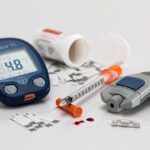Diabetes update
Diabetes is on the increase. The vast majority of people will diabetes are people with type 2 diabetes. Yet even type 1 diabetes is on the increase. In this article, we want to review where progress is on the key forms of diabetes.
First, let’s review what diabetes is. It is an autoimmune disease. This is when the body attacks its own cells. In the case of diabetes type 1, cells in the pancreas. beta cells are mistakenly attacked and destroyed by the immune system. Because the pancreas cannot produce enough or, in some cases, any insulin the patient needs to take to manage their glucose/blood sugar.
In the case of type 2 diabetes, it is not as well understood as it is for type 1 diabetes. Initially, it was assumed that type 2 diabetes was a metabolic disorder, meaning the chemistry of the cell wasn’t working together correctly. In recent years this understanding is being challenged as really an autoimmune disaster. In this approach treatment and preventive care may benefit from a look at the condition.
In type 2 diabetes, the pancreas is able to produce insulin, but for unknown reasons, the insulin doesn’t work with the body’s cells and the glucose isn’t taken in by the cells. The cells aren’t nourished correctly and a myriad of systems are challenged to operate correctly. Because cells aren’t working at the most efficient state, you are being to decline. Heart, kidney, tingling in feet and hands, numbness, your circulation isn’t working as well as it should.
In many cases the decline is so slow you don’t realize it until serious damage occurs. This is why regular checkups are important. To monitor levels within the body and look for signs of increasing glucose or also called blood sugar.
Let’s now look at progress in finding a solution to type 1 diabetes
Scientists at the University of Chicago looked at the role of beta cells in triggering autoimmunity in a new study. Beta cells are islet cells that produce insulin, and when they are destroyed, it causes type 1 diabetes. The researchers found that when beta cells are exposed to a certain enzyme, it can cause the immune system to attack and destroy them.
There is a chance that new drugs will block the immune system from destroying beta cells. This can help prevent type 1 diabetes in at-risk patients. The immune system won’t be able to destroy the beta cells in a way that would help fight diabetes.
The researchers at Yale created an oral drug to treat diabetes. The medication reverses the inflammatory effects of the disease by controlling the levels of the human immunodeficiency virus in the body. This is a major breakthrough in the treatment of diabetes and will help improve the quality of life for millions of people who suffer from this chronic condition.
Here’s the latest on type 2 diabetes
Type 2 diabetes is not very well understood from a cure point of view. Medical folks understand what is happening with type 2 diabetes, but how to get the root of the problem isn’t so easy. There are a variety of studies looking for drugs to boost insulin production and improve the tissue’s ability to use insulin to bring glucose into the tissue.
Much of the research around type 2 diabetes is looking at the cause of inflammation. It has long been believed that high glucose levels were the reason for inflammation in type 2 diabetes patients. Instead, studies are pointing out that problems in mitochondria and raised fat derivatives were responsible for prolonged inflammation. This leads to heart, kidney, and other complications.
Other research is pointing at environmental conditions. Type 2 diabetes is increasing worldwide and the rise parallels the increasing pollution levels. It is suspected that the chemicals seep into the body and combine to create chemicals that interfere with the body’s process. Even though type 2 diabetes is increasing quickly around the world, it is something that can be reversed.
Enter Prediabetes
I have a history of glucose or blood sugar test result that border the high end of normal for glucose. My doctor isn’t worried about it. She says that’s where I also come in and until it climbs closer to 120 she’s not going to worry. Being the curious person I am, I have started to look into what diabetes is and what happens as I climb to the 120-level of glucose.
As I started reading about diabetes, to my surprise I entered into the prediabetes realm. As I have read up on diabetes, I have come to learn that prediabetes is something like the dawn. If we say night represents the normal range of glucose levels and 120 represents the sun completely above the horizon, then prediabetes is the time when the first rays of the sun creep over the horizon until the sun is fully above the horizon.
The big difference here is we can reverse the rising process of prediabetes. By addressing and changing our lifestyle we can bring down our glucose levels. We can’t cure why we are moving into prediabetes, what we can do is help the body work efficiently and in an optimal way. Managing the carbs and sugar we eat is a starting point. Once we have prediabetes under control, we can avoid or greatly reduce moving into type 2 diabetes.
Gestational diabetes
Women who don’t already have diabetes can develop gestational diabetes during their pregnancies. Gestational diabetes affects 2% to 10% of pregnancies in the United States. Gestational diabetes can affect your baby’s health, so make sure you manage it.
Your body makes more hormones as you become pregnant, and it will change in some ways, such as weight gain. These changes can result in your body’s cells not being able to use insulin as effectively. Your body needs to get more insulin to function.
Some pregnant women have resistance to insulin used to manage blood sugar even before their weight gains during their pregnancies. Women’s bodies are going through many changes during pregnancy. Some of these changes affect the process of insulin working and can result in gestational diabetes.
Wrap-up
We are slowly, very slowly learning about diabetes and its many ways of manifesting. Much of what we are learning says diabetes, especially type 2 diabetes and prediabetes can be reversed with lifestyle changes and learning. Look for diabetes update in our other blog post.
Read more: ADA, Thebrighterside, YouTube, Knowridge, PubMed, CDC









